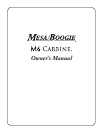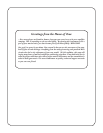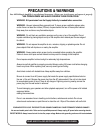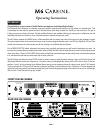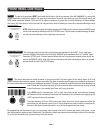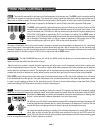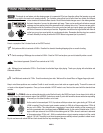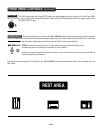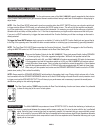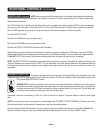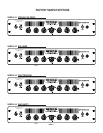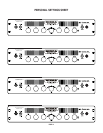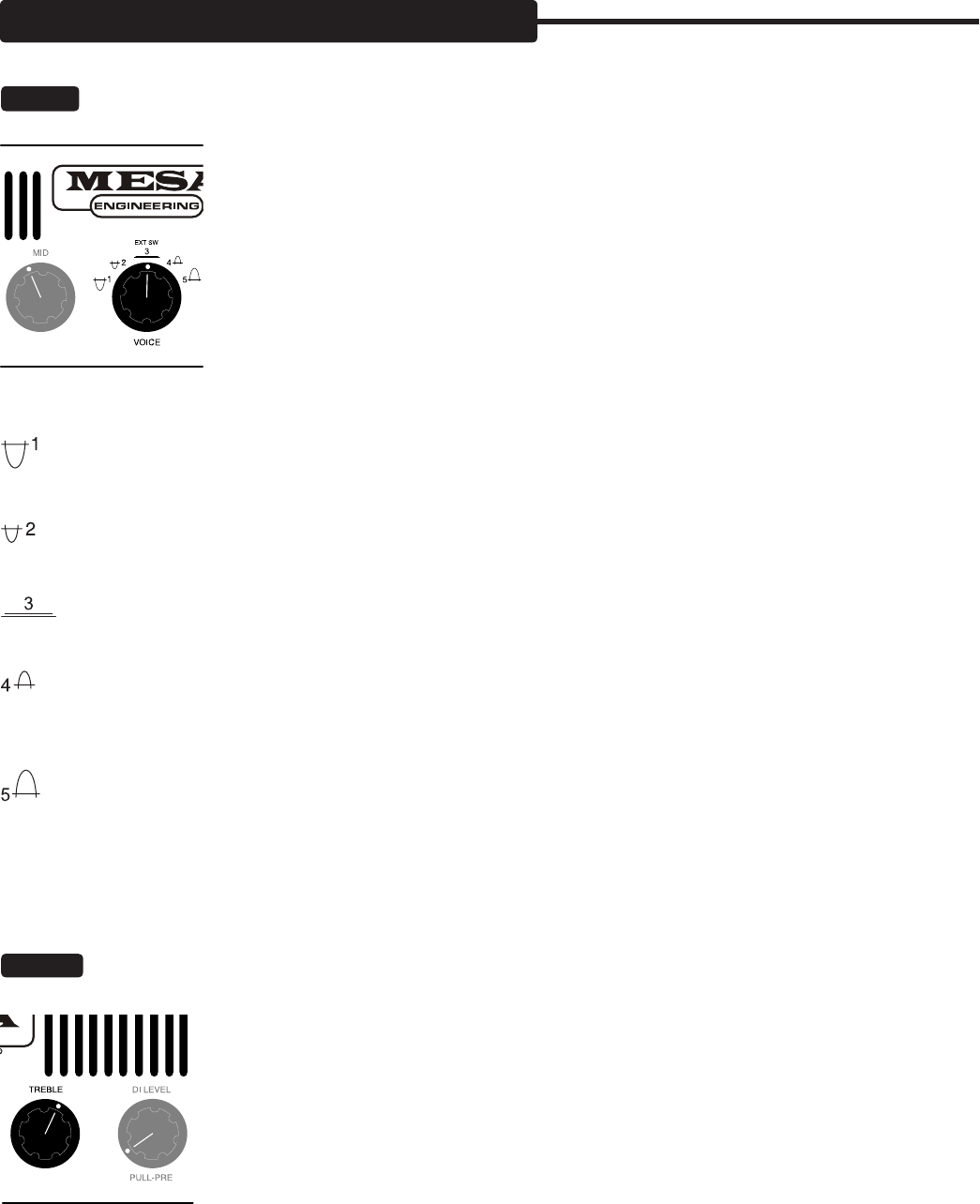
PAGE 5
VOICE:
This simple to use feature puts the shaping power of a parametric EQ at your fingertips without the learning curve and
allows you to go right to the most iconic sounds instantly. The 5 position rotary allows you to select from four distinct and different
voices aimed at all the classic Bass sounds. Most of the dramatic changes occur in the midrange where
the basic character of a sound is determined right away. There are two positions that feature scooped
midrange and two positions that utilize increased mids to achieve their curve. These curves are graphi-
cally pictured around the 5 positions of the rotary control and with just a quick glance you probably can
tell which of these are to become your favorites. Regardless it would be wise to get familiar with them all
so that you can go to a sound quickly in a performing situation. Remember that the rotary tone controls
will react differently than they do when the VOICE feature is bypassed (set to position 3).
Here is a synopsis of the 5 choices found on the VOICE control;
Fairly extreme Mid cut centered at 540Hz. Excellent for dramatic thumbing/slapping styles or smooth chording.
Gentle scooping of Midrange also centered at 540Hz. Great for R & B and anytime you want to tastefully widen a sound.
Voice feature bypassed (Flat with Tone controls set at 12:00)
Midrange boost centered at 370Hz. Good choice for articulate finger style playing. Tracks your playing with articulation and
enhanced definition.
Low Mid boost centered at 170Hz. Great for enhancing low mids. Works well for classic Blues or Reggae finger style work.
Keep in mind these positions use a medium Q width to avoid a notchy sound and retain an organic quality. There will be some cut
or boost on the adjacent frequencies. Once you have selected a VOICE mode to use, fine tune the sound with the standard tone
controls.
TREBLE:
The TREBLE is also an active shelving style control like that found in the BASS and again, it was chosen for its ability to
radically shape the upper harmonic region. Like the BASS, it also has a center Q point with harmonics above and below responding
in harmony as it is dialed for either cut or boost.
As the control is increased past 12:00, it produces a 6db per octave rise in gain starting at 723Hz until
+20db is reached. From this point, gain remains constant at +20db for all frequencies above 723Hz all
the way out to 20Khz. This scheme lends a sweetness of sound while retaining all the necessary cut
and focus associated with a traditional passive TREBLE control. As this control is dialed below 12:00, it
begins a 6db per octave cut from 3.2Khz to the shelving point at 723Hz, where it continues to attenuate
all frequencies above 723Hz until - 20db is reached where cut gain remains constant until the control
reaches 7:30 (off). The ability to cut these frequencies more radically makes it possible to obtain incred-
ibly rich and warm old-school R&B and Jazz sounds that rival any recordings of the day.
FrONT PANeL CONTrOLS: (Continued)



